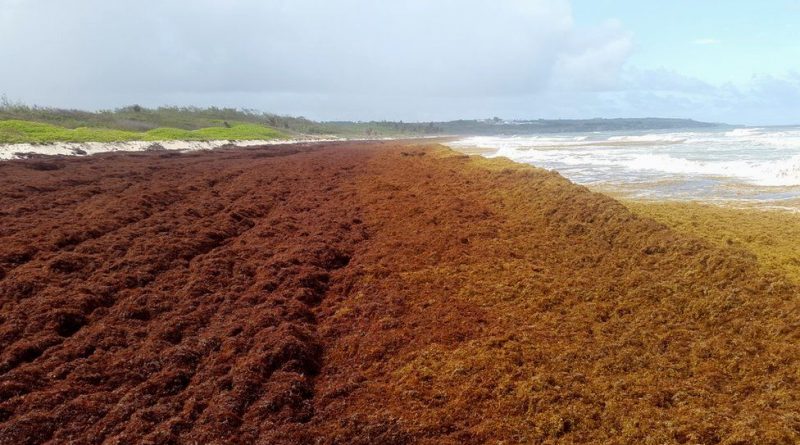As heavy drift of sargassum covers beaches not usually affected, Mussington says shift in the wind is responsible for the spread
Residents are worried about the influx of sargassum seaweed, which continues to spread and now covers several popular beaches ahead of the Labour Day weekend.
Videos and photographs in circulation show beaches across the country covered with the smelly seaweed, including the Ffryes Beach shoreline and a wide expanse of Coco Point Beach in Barbuda.
Ffryes is the gathering point for supporters of the opposition United Progressive Party (UPP), who flock there in the thousands on the May Day holiday.
While it was acknowledged that most people do not go to Ffryes on that day to swim, there are concerns that the activities could be affected. For instance, they say, food will be on sale and the seaweed carries a very disgusting odour.
In March, Barbuda Councilman John Mussington, a marine biologist, spoke extensively about scientific predictions that the seaweed would reach this side of the world much earlier than expected. And he said, then, that this would pose a problem for many countries.
However, in spite of the number of beaches affected at present, Mussington says this is not the worst influx over the past 12 years.
What is different this year, he says, is a shift in the wind; and this will see the sargassum impacting beaches that, usually, are not affected by the smelly seaweed.
Reportedly, most Eastern Caribbean islands have been seeing record amounts of sargassum in the first quarter of 2023. This is a period that, normally, is relatively free of the seaweed, experts say.
According to reports, the level of the seaweed now arriving is already severe, and it is not expected to improve in the coming weeks. In fact, there is still twice as much sargassum – about 202% more – visible in the Atlantic than this time last year.




